For some reason or the other, the three blasts that rocked Mumbai recently are being largely attributed to a group that is being termed as Indian Mujahedeen. However, at the time of writing, investigators are also reportedly looking into the possibility of the involvement of senior Lashkar-e-Toiba operatives Faiyaz Kagzi and Zabiuddin Ansari. Kagzi was allegedly instrumental in carrying out the 11/7 serial train blasts, after which his real association with Lashkar began.
At any rate, a number of so-called Indian Mujahedeen cadres have been arrested in Mumbai, Gujarat, Rajasthan, Madhya Pradesh, Uttar Pradesh, Delhi, Karnataka and Andhra Pradesh in a nationwide crackdown that followed the latest Mumbai blast. Apparently, one suspect has also been arrested in Nepal.
It is the author’s analysis that Indian Mujahedeen is merely a “silhouette fusion of the SIMI,” and there is—despite the fact that a clinically smart ORBAT has been drawn up about its leadership, including Abdus Subhan Qureshi and Safdar Nagori (the latter a self-confessed SIMI leader, presently under incarceration)—the Indian Mujahedeen is a terrorist organisation only on paper. Indeed, it must be understood that the so-called Indian Mujahedeen is only one of the many factions that make up the bottom-end SIMI membership. When the SIMI was banned, its top leadership have being detained; the organisation simply took on a new name that was “disseminated” in the nation’s security firmament with the intention to provide it both novelty and contribute to the degree of confusion in security circles. In reality, SIMI is Indian Mujahedeen, and the change of names was but a way to herald not only a change in tactics: SIMI-affiliated militants sought to garner more support from the Muslim community in India than from guest-militants, but also because interchange-ability was a time tested Islamist ploy.
But, one aspect that must not be disregarded is the unity of purpose in the Islamist agenda, especially in the post 9/11 era. It is al-Qaeda—alongside its “senate” in Quetta—that is the prime salar-e-allah of all Islamist action across the globe. Although it might seem unlikely, but the fact of the matter is that action in Iraq, the Arab peninsula, and in the general Islamic Maghreb has more or less been directed from either the caves in Tora Bora, or safe houses in Djakarta/Chittagong. It is of little consequence whether al-Qaeda temporarily wears the garb of a Sirajuddin Haqqani, or Abu Bakr Bashir. The interchange-ability has ascertained that names mean little where important action is at stake. Therefore, if doubts persist about the gravity of the Salafi movement’s agenda in recent times, especially in South and South East Asia, action that practitioners of the movement are perpetrating in places such as Mumbai should not only dispel misgivings, but also reinforce the aspect that alludes to interchange-ability. If one were to hark back to the explosions in Bangladesh’s 63 out of 64 districts on 17 August 2005, which proclaimed a new milestone of terror (albeit more by way of propaganda than damage: there were no deaths in the bombings!), the violence that is being perpetrated in India provides unassailable assertion to the cross-border nature of the movement. Therefore, even as the Islamists in Bangladesh are trying to assert their identity by such acts (quietened temporarily!), the import of the exercise has always been to sabre-rattle their identity across the borders. Indeed, almost all Salafi agenda in the region is now emanating from either Pakistan or Bangladesh, with both the countries, notwithstanding Sheikh Hasina’s brave stand, emerging as the dual-epicentre of terror.
However, the article wishes to concentrate on two aspects. One that pertains to North East India and the robust launching pad that it is providing for the Islamists from Bangladesh and that of interchange-ability of tanzeems that seem to be confusing India’s intelligence apparatus.
The crucial aspect that is poised to overwhelm the North East is the Islamist invasion from Bangladesh, with a clear Pakistanisation of its security system. The urgency with which this agenda is seeking to enter the North East, for instance, together with the unabated migration from Bangladesh, is fraught with serious national security implication. The illegal migrant from Bangladesh comprise the mainstay of the agenda. The objective of Nizam-e-Mustafa is the agenda’s technique of exploiting Islam in order to consolidate the annexation that is happening as a result. This is primarily because the allegiance of the migrant continues to be informed by the country of her birth (Bangladesh)—a commitment that the agenda has encouraged by resorting to a multitude of subterfuges, the most important of which is the avowed agenda of a greater Bangladesh. Indeed, the invasive design of the Bangladeshi migrant is bringing about a decisive demographic transformation in Assam, albeit in a way that has not alerted the security calculus of New Delhi. The Islamists and their surrogates, the illegal migrants, are not engaging the security forces, and political formations are jettisoning national security concerns for political gain.
The movement towards a greater Bangladesh has also witnessed acceleration during the last elections to the Assam assembly with the emergence of formations that clearly represents the dangerous agenda. Especially with the demise of the regional parties that had been engendering the cause of the indigenous Assamese, the electorate seems to be in the hands of the agenda. Reports suggest that direct support was lent by extra-regional forces to functionaries and practitioners of the new formations. Moreover, the new formations found ready support in the Bangladeshi migrant constituency, who contrary to what scholars of certain hue seem to opine, are not following a process by which a neo-Assamese social formation is being created. In other words, Assamisation is not taking place. It must also be noted that the fact that Assamese language is being censused as mother tongue in certain Bangladeshi migrant populated areas. It is also being noted that illegal migrants (especially in the period following the quashing of the IM (DT) Act by the Supreme Court of India) are increasingly beginning to take on working Assamese sounding aliases such as “Mamoni,” or “Raju” in order to provide a veneer of Assamisation. Indeed, there is a determined progression in the salafi movement cause in Assam—one that is not quite vocal at this point of time. Indeed, whereas the earlier forecast had been that the agenda would await until around 2020, and the end of ethnic militancies in the region before taking up the trenches, recent developments have indicated that the process of instituting Nizam-e-Mustafa in the region, and of Brihotor Bangladesh has been expedited. The development is perhaps a result of not only the “transformative moment” that Islam is presently undergoing, but also because of the political climate in Bangladesh. In fact, the motivation for such a development is less religion and more political. However, this is not equivalent to stating that the Salafi strain in Islam is not on the rise. It is growing, save that the minority that control it are politically motivated (as has been in the case of Mumbai 13 July 2011), and the majority that consist of the practitioners are puritans who could even be oblivious of the fact that such engineering is taking place. In other words, the cloak of Islamism is aiding political expediency.
In the context of the anti-India agenda, an important aside that must be borne in mind is that the situation can no longer refer to separate tanzeems. In the opinion of the author, the agenda, as aforesaid, is now being guided only by al-Qaeda. A unique concept of “sleeper cells” working independently of one another has been initiated. The uniqueness of the movement is that no conventional command and control exists, and each tanzeem/module/cell follows a set of general political motivation, and not instruction. The coordination system between the groups (despite the fact that they are all subservient to al-Qaeda) is untenable—groups have their own agenda and have their own system of functioning. Say, a module of Khudam-ul-Ansar wants to bomb a mass transit system in Mumbai, it does not have to take the aid of another tanzeem (or, even the clearance of its own salar-e-allah, Mohammad Azhar), but can act independently, seeking assistance from even non-traditional underground organisations, or in the case of the recent Mumbai blast, an illegal population driven mafiosi in the city. However, the umbrella alliance to al-Qaeda is real, despite what Indian law-enforcement agencies have stated about its absence in the Mumbai blasts. It may have different ways of manifesting itself, whether it is Lashkar-e-Toiba in Kashmir and Pakistan, Jemaah Islamia in Indonesia, HUJI (B) in Bangladesh or Muslim United Liberation Tigers of Assam (MULTA) in Assam, the grand strategy is to wage war against the “non-believers” and institute dar-ul-aman throughout the world. Also, the inter-changeability factor has become the prime strategy. A member of one tanzeem can operate under the banner of another tanzeem, and there are no longer strict compartments from which a puritan operates. With the deconstruction of the Islamist paradigm, boundaries have ceased to exist not only between countries, but also between tanzeems. Only the methods are different, and individual puritans innovate their own methods of operations. There are no patterns of discovery, apart from a decisively anti-India agenda.
Indeed, the author would not be surprised if the Mumbai blasts were carried out directly by puritans from Bangladesh and Pakistan, albeit with Indian surrogates, who are increasingly becoming subservient to near-abroad and al-Qaeda direction. It would, therefore, be prudent to institute non-orthodox methodologies and analysis when action and motivation of such groups are taken into consideration. The non-comprehension of the new paradigm and the driving force of the agenda is perhaps one of the reasons why the authorities have not been able to unearth clear links in the Mumbai blasts. The accent should be to avoid patterns and search for unorthodox links.
----------------------------------------
Published date : 27th July, 2011


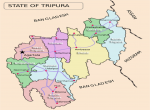

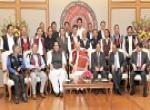
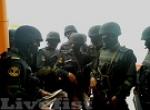
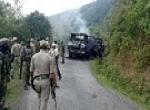

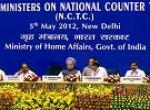
Post new comment